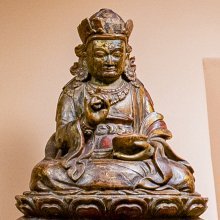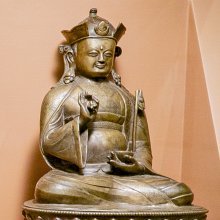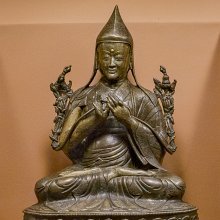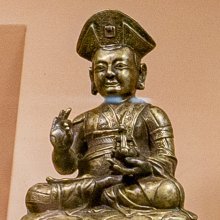Haat: 2 definitions
Introduction:
Haat means something in Hindi, biology. If you want to know the exact meaning, history, etymology or English translation of this term then check out the descriptions on this page. Add your comment or reference to a book if you want to contribute to this summary article.
Ambiguity: Although Haat has separate glossary definitions below, it also represents an alternative spelling of the word Hata.
Images (photo gallery)
Biology (plants and animals)
Source: Google Books: CRC World Dictionary (Regional names)Haat in Thailand is the name of a plant defined with Artocarpus lakoocha in various botanical sources. This page contains potential references in Ayurveda, modern medicine, and other folk traditions or local practices It has the synonym Artocarpus yunnanensis Hu (among others).
Example references for further research on medicinal uses or toxicity (see latin names for full list):
· Flora Indica (1832)
· Mem. Wern. Soc. (1826)
· Bulletin of the Fan Memorial Institute of Biology (1937)
· Taxon (1977)
· Acta Phytotaxonomica Sinica (1957)
If you are looking for specific details regarding Haat, for example chemical composition, health benefits, pregnancy safety, extract dosage, side effects, diet and recipes, have a look at these references.

This sections includes definitions from the five kingdoms of living things: Animals, Plants, Fungi, Protists and Monera. It will include both the official binomial nomenclature (scientific names usually in Latin) as well as regional spellings and variants.
Languages of India and abroad
Hindi dictionary
Source: DDSA: A practical Hindi-English dictionaryHaat in Hindi refers in English to:—(nf) a temporary and periodic market; (improvised) market-place, bazar, mart; —[uthana] the market to be wound up; things to come to an end; —[karana] to go marketing; -[bajara karana] to go out making purchases, to go out marketing; -[lagana] marketing activity to commence; a bazar to come up..—haat (हाट) is alternatively transliterated as Hāṭa.
...
See also (Relevant definitions)
Starts with: Haat-kattu, Haat-missamis, Haat-sadhnu, Haatahalahal, Haate-bancharo, Haate-taan, Haatippe, Haattee-laharo, Haatteekaan, Haatti-paaile, Haattisunde-jhaar, Hatahatai, Hatapat, Hatcitta.
Ends with (+1): Antarghaat, Apaghat, Arttat, Cakshat, Dhat, Ghaat-pratighaat, Jhat, Jihat, Julhat, Khatikhaat, Kotaparv-pashchaat, Lamo-haat, Mahaat, Marmaghat, Mashat, Sakshat, Suraghaat, Thaat, Tong thammachaat, Vidyutghaat.
Full-text (+1754): Hat, Sojho-hata, Bahukaraniya, Hata-sadhnu, Yathanubhutam, Athara Topakara, Kritakartavya, Kritabrahman, Sampattima-hata-halnu, Nirayati, Pratarashita, Purvavairin, Yathabhirucita, Jitaksha, Karmasamnyasika, Pratihiteshu, Udyatasruc, Darshivams, Anupathitin, Anujivya.
Relevant text
Search found 77 books and stories containing Haat, Hat; (plurals include: Haats, Hats). You can also click to the full overview containing English textual excerpts. Below are direct links for the most relevant articles:
The Bhikkhus Rules (by Bhikkhu Ariyesako)
Part 5 - Auckland Vihara < [Appendix D]
Teaching Dhamma < [Chapter 4 - Right Livelihood For A Bhikkhu]
Tibet (Myth, Religion and History) (by Tsewang Gyalpo Arya)
5. Buddhist Schools and the Politics of Tibet < [Chapter 7 - Buddhism in Tibet]
10. Conclusion < [Chapter 5 - Tibetan Language and Writing System]
Manoj Das's “Sharma and the < [April – June, 1981]
Socialism: The Christian View < [July 1957]
Socialism: The Christian View < [July 1957]
Vernacular architecture of Assam (by Nabajit Deka)
Techniques (e): Roof Construction Technique < [Chapter 4]
Vivekachudamani (by Shankara)
Related products






